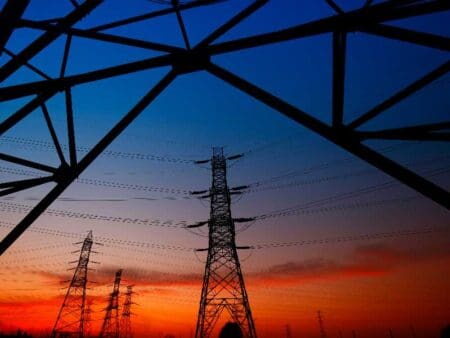
More effort is needed on smart grids and digitalisation, the IEA’s Tracking Clean Energy Progress 2023 update has reported.
Countries are increasingly preparing their infrastructure for digitalisation and several major economies have announced substantial new funding to modernise and digitalise their electricity grids.
However, further efforts by policymakers and industry will be necessary to realise the full potential of digitalisation to accelerate the clean energy transition, including the implementation of standards, policies and regulations that prioritise innovation and interoperability while addressing risks to cybersecurity and data privacy.
The IEA’s Tracking Clean Energy Progress annually assesses recent developments for over 50 components of the energy system against its ‘net zero by 2050’ scenario trajectory for 2030.
Have you read?
Smart grids are crucial but delays are costly – IEA
Gridspertise CEO highlights digital leapfrog opportunities for European DSOs
The report states that grid-related investment in digital technologies has grown by over 50% since 2015, and is expected to reach 19% of total grid investment in 2023.
There is an increasing focus on the distribution segment, which now represents more than 75% of the total digital spend. There has also been a substantial upswing in investment in electric vehicle charging infrastructure, which doubled in 2022 compared to the previous year.
However, overall investment in smart grids needs to more than double through 2030 – from around US$300 billion/year currently to almost US$600 billion/year – to get on track with the ‘net zero emissions’ scenario, especially in emerging markets and developing economies.
The number of smart power meters worldwide exceeded 1 billion in 2022, a tenfold increase since 2010. However, for the first time in a decade, investment slightly decreased, reflecting the plateauing deployment rate as many countries achieve close to full or full rollout.
Meanwhile, connected devices with automated controls and sensors are expected to reach 13 billion in 2023, up from fewer than 1 billion a decade ago. This number could reach more than 25 billion in 2030.
Similar trends are being seen in power grids, with around 320 million distribution sensors deployed globally.
Digitalisation progress
Notable progress in developing digitalisation in 2022 included the European Union with its action plan and the UK with its ‘digital spine’ feasibility study,
The European Commission expects about €584 billion (US$650 billion) of investments in the European electricity grid by 2030, of which €170 billion would be for digitalisation, including smart meters and other digital technologies.
Other examples of recent major grid investments are China with US$442 billion in the period 2021-205, Japan with US$155 billion and India with INR3.03 trillion (US$28 billion).
In North America, in 2022 the US announced the Grid Resilience Innovative Partnership programme with $10.5 billion in funding and Canada is investing US$100 million through its smart grid programme.
Among the needs looking ahead, the report states that further progress is needed on smart EV charging to tap into the major flexibility potential of the growing EV fleet.
At the end of 2022, there were 2.7 million public charging points worldwide, more than 900,000 of which were installed in 2022, an increase of about 55% on 2021 stock. However, only a fraction of these have smart charging capabilities.
If made grid interactive, other technologies such as heat pumps and air conditioners could also provide flexibility.
To get in step with the ‘net zero’ scenario, the global inventory of flexible assets needs to increase tenfold by 2030, which means that all sources of flexibility – including batteries and demand response – need to be leveraged.
Enabling digital technologies such as smart meters and distributed monitoring and control devices are essential to fully exploit the flexibility potential of the growing number of connected devices.
In addition to ramping up deployment of key digital technologies, existing data and digital assets need to be better utilised to provide benefits for consumers and the energy system.
In 2019, it was estimated that utilities were leveraging only around 2-4% of the data collected.
The report also points out the importance of international collaboration programmes for smart grids as a key enabler for their sustainable development, while also large scale interconnectors are highlighted as of vital importance for decarbonisation in certain regions such as the EU, sub-Saharan Africa and China.








